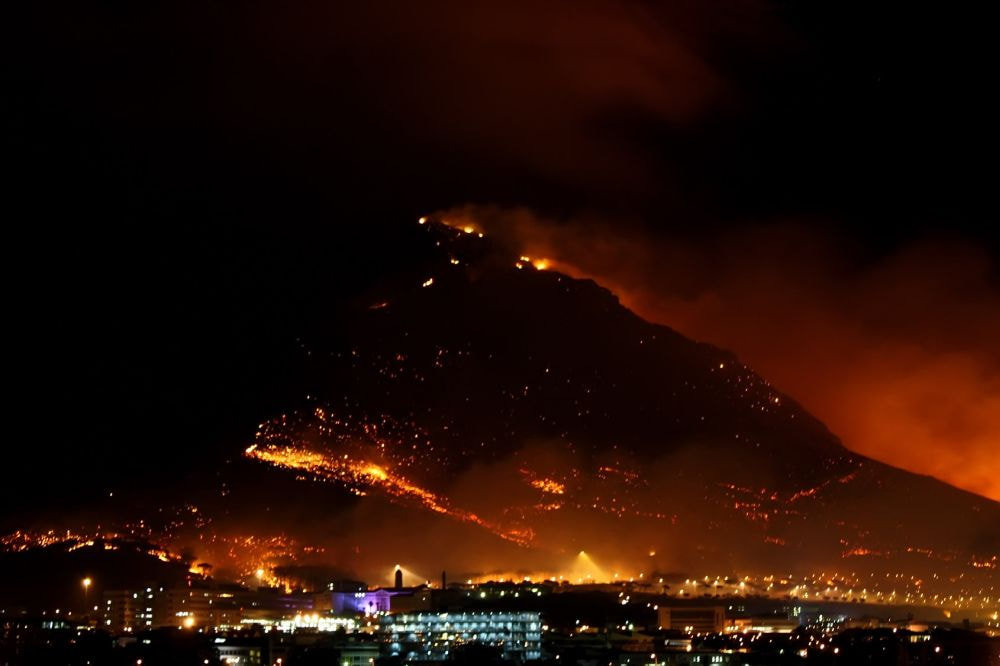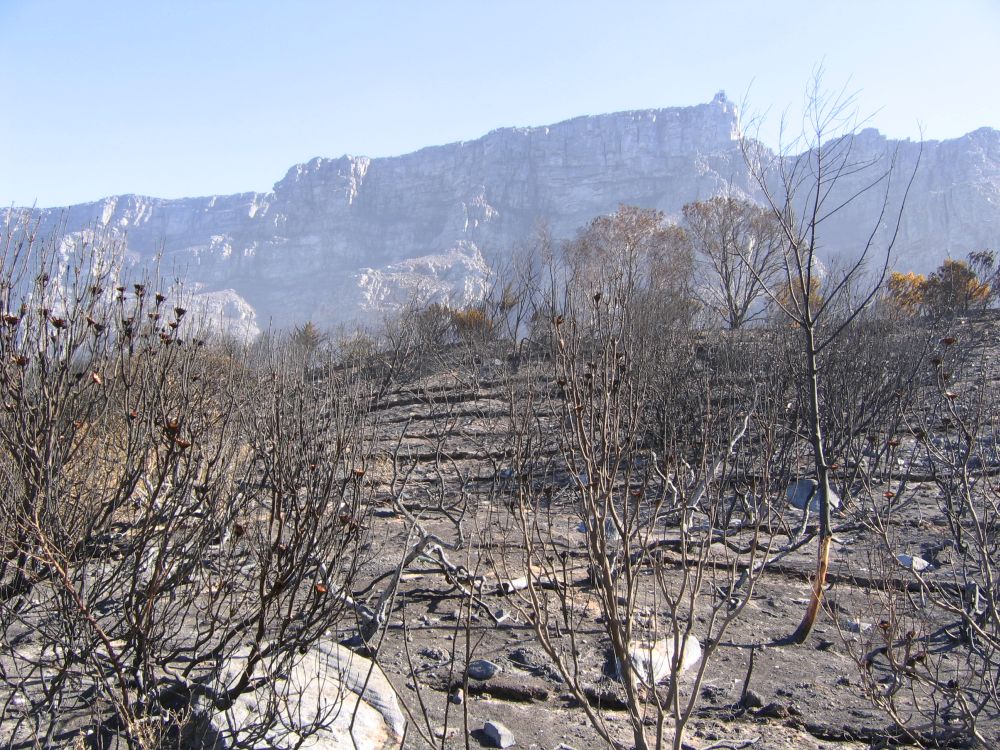- Home
- Magazines
-
Newsletters
- 19 July 2024
- 12 July 2024
- 5 July 2024
- 28 June 2024
- 14 June 2024
- 7 June 2024
- 31 May 2024
- 24 May 2024
- 17 May 2024
- 10 May 2024
- 3 May 2024
- 26 April 2024
- 19 April 2024
- 12 April 2024
- 22 March 2024
- 15 March 2024
- 8 March 2024
- 1 March 2024
- 23 February 2024
- 16 February 2024
- 9 February 2024
- 26 January 2024
- 19 January 2024
- 12 January 2024
- 22 December 2023
- 1 December 2023
- 24 November 2023
- 10 November 2023
- 3 November 2023
- 27 October 2023
- 20 October 2023
- 13 October 2023
- 6 October 2023
- 29 September 2023
- 22 September 2023
- 15 September 2023
- 8 September 2023
- 25 August 2023
- 18 August 2023
- 11 August 2023
- 4 August 2023
- 28 July 2023
- 21 July 2023
- 14 July 2023
- 7 July 2023
- 30 June 2023
- 23 June 2023
- 15 June 2023
- 2 June 2023
- 26 May 2023
- 19 May 2023
- 12 May 2023
- 5 May 2023
- 28 April 2023
- 21 April 2023
- 14 April 2023
- 6 April 2023
- 31 March 2023
- 24 March 2023
- 17 March 2023
- 10 March 2023
- 3 March 2023
- 24 February 2023
- 17 February 2023
- 10 February 2023
- 3 February 2023
- 27 January 2023
- 13 January 2023
- 22 December 2022
- 15 December 2022
- 9 December 2022
- 2 December 2022
- 25 November 2022
- 18 November 2022
- 11 November 2022
- 4 November 2022
- Advertising
- Subscribe
- Articles
-
Galleries
- AOSH Firexpo 2024
- Midvaal Fit to Fight Fire 2024
- WoF KNP 2023 Gallery
- TFA 2023 Gallery
- DMISA Conference 2023
- ETS 2023 Gallery
- Drager Fire Combat and Rescue Challenge 2023
- AOSH Firexpo 2023
- Midvaal Fit to Fight Fire
- WC IFFD 2023
- NMU 13th Fire Management Symposium 2022
- JOIFF Africa Conference 2022
- ETS 2022 Gallery
- TFA 2022 Gallery
- IFFD 2018
- SAESI
- TFA
- WRC 2018
- WRC 2019
- A-OSH/Securex
- IFE AGM 2019
- ETS Ind Fire Comp Nov 2019
- ETS Challenge 2021
- Drager launch
- Drager Fire Combat and Rescue Challenge 2022
- TFA
- Contact
- Home
- Magazines
-
Newsletters
- 19 July 2024
- 12 July 2024
- 5 July 2024
- 28 June 2024
- 14 June 2024
- 7 June 2024
- 31 May 2024
- 24 May 2024
- 17 May 2024
- 10 May 2024
- 3 May 2024
- 26 April 2024
- 19 April 2024
- 12 April 2024
- 22 March 2024
- 15 March 2024
- 8 March 2024
- 1 March 2024
- 23 February 2024
- 16 February 2024
- 9 February 2024
- 26 January 2024
- 19 January 2024
- 12 January 2024
- 22 December 2023
- 1 December 2023
- 24 November 2023
- 10 November 2023
- 3 November 2023
- 27 October 2023
- 20 October 2023
- 13 October 2023
- 6 October 2023
- 29 September 2023
- 22 September 2023
- 15 September 2023
- 8 September 2023
- 25 August 2023
- 18 August 2023
- 11 August 2023
- 4 August 2023
- 28 July 2023
- 21 July 2023
- 14 July 2023
- 7 July 2023
- 30 June 2023
- 23 June 2023
- 15 June 2023
- 2 June 2023
- 26 May 2023
- 19 May 2023
- 12 May 2023
- 5 May 2023
- 28 April 2023
- 21 April 2023
- 14 April 2023
- 6 April 2023
- 31 March 2023
- 24 March 2023
- 17 March 2023
- 10 March 2023
- 3 March 2023
- 24 February 2023
- 17 February 2023
- 10 February 2023
- 3 February 2023
- 27 January 2023
- 13 January 2023
- 22 December 2022
- 15 December 2022
- 9 December 2022
- 2 December 2022
- 25 November 2022
- 18 November 2022
- 11 November 2022
- 4 November 2022
- Advertising
- Subscribe
- Articles
-
Galleries
- AOSH Firexpo 2024
- Midvaal Fit to Fight Fire 2024
- WoF KNP 2023 Gallery
- TFA 2023 Gallery
- DMISA Conference 2023
- ETS 2023 Gallery
- Drager Fire Combat and Rescue Challenge 2023
- AOSH Firexpo 2023
- Midvaal Fit to Fight Fire
- WC IFFD 2023
- NMU 13th Fire Management Symposium 2022
- JOIFF Africa Conference 2022
- ETS 2022 Gallery
- TFA 2022 Gallery
- IFFD 2018
- SAESI
- TFA
- WRC 2018
- WRC 2019
- A-OSH/Securex
- IFE AGM 2019
- ETS Ind Fire Comp Nov 2019
- ETS Challenge 2021
- Drager launch
- Drager Fire Combat and Rescue Challenge 2022
- TFA
- Contact
|
14 April 2023
|
Featured FRI Magazine article: Why incident command? A history lesson written by Reinard Geldenhuys
This week’s featured Fire and Rescue International magazine article is: Why incident command? A history lesson written by Reinard Geldenhuys, chief fire officer, Overberg District Municipality. We will be sharing some technical articles from Fire and Rescue International magazine on a weekly basis with our readers to assist in technology transfer. This will hopefully create an increased awareness, providing you with hands-on advice and guidance. All our magazines are available free of charge in PDF format on our website and online at ISSUU. We also provide all technical articles as a free download in our article archive on our website.
Why incident command? A history lesson by Reinard Geldenhuys
The Western Cape is one of the fire prone regions of South Africa. It’s coastal and mountain fynbos is interspersed with large tracks of alien infestation, resulting in unique fire challenges; not only for the person on the frontline who has to physically fight these fires but also the incident commander who has to outsmart the fire dragon and keep the fighters on the ground safe.
Vast and somewhat inaccessible mountain ranges make for difficult fire fighting conditions, most often leading to extended attack fires deploying a large number of personnel and resources.
Added to that is the encroachment of man and its castles into the natural environment including mountainous areas, leading to very rapid developing urban interphase fires where multi-disciplines and technical recourses need to be deployed and managed to protect infrastructure.
The above scenario clearly answers the question before we even ask it: Why incident command?
Leading up to the turn of the century, fire services in the Western Cape pretty much did their own thing and the main services like City of Cape Town had some systems going. Nonetheless, in general, fires were fought based on the experience and knowledge of the mostly part time fire chiefs in the rural area. At that stage the fire teams were provided by Cape Nature and the forestry companies.
Then came 2000 and instead of Y2K, we had fires. The Western Cape experienced immense fires simultaneously. Fire services were overwhelmed. Table Mountain burned from the table top right through to Cape Point. The city declared code red and units from afar as George in the Southern Cape were called in to help. At that stage the ‘city’ consisted of five substructures and as more and more serious fires burned out of control in the mountains around the peninsula, incident command systems (ICS) started collapsing. Fire fighters were flown in from Gauteng to relieve tired and overworked crews in the region.
‘Western Cape on Fire’ shouted the headlines in the newspapers and photos of families scurrying to evacuate in time increased newspaper sales! In the aftermath, the provincial and national government wanted answers.
On 25 January 2000, Ronnie Kasrils, then Minister of Water Affairs and Forestry, addressed parliament, during the snap debate on disaster management, on behalf of the Minister of Provincial and Local Government. In this speech, he announced the intention to conduct an expert investigation of the underlying reasons for the severity of the wildfires and the lessons that can be learned through wildfire management.
On 26 January 2000, the cabinet of the Western Cape Government resolved to appoint a task group to advise on various aspects regarding the January 2000 wildfires in the Western Cape. This task group became known as the fire investigation task team (FITT) and delivered its first report in late March 2000.
The report, ‘A review of the wildfires in the Western Cape during 15 to 25 January 2000’, defined one of the problems as follows: “Another pervasive problem reported was that of communication during fires owing to (a) incompatible radio frequencies and (b) gaps in the coverage between radio repeater stations in the mountainous terrain. There were also frequent problems with ground-to-air communication where aerial support was used. Those in charge of fires also regularly reported directly or by implication the difficulty of developing fire fighting strategies due to the inability to obtain sufficient information about larger fires. Finally, respondents often cited the lack of adequate overall coordination of strategy and resources as a major problem.”
One of the recommendations that lead from the investigation was, “The Department of Provincial and Local Government should publish regulations under the Disaster Management Bill to establish a standard for a disaster plan (DISPLAN) and incident command and the standard should be based upon the USA Federal Emergency Management Agency (FEMA) standards.”
This already starts answering our question of why incident command?
The fire services’ respondents, Donald Sparks, Hein Munnik and Gawie Parsons, all chief officers, drafted the first incident command system as part of the mission to implement the recommendations. Parts of this system are still in use today.
Cape Nature followed suit and ICS in South Africa gathered further momentum after the South African Incident Command Working Team was formed in March 2004, following the third International Wildland Fire Conference in Sydney Australia in 2003.
This working team has been meeting on a regular basis with representatives from the forestry industries, individual fire services, Cape Nature, SANParks and representatives and instructors from the USA.
In the beginning phases, the USA-South Africa (SA) agreement was an informal arrangement but, as time progressed, the arrangement was formalised as the US Agency for International Development signed formal agreements to roll out ICS in South Africa.
The frontrunner in facilitating training in incident command was and still is FFA Training that has presented various levels of ICS training under the auspices of the SA ICS Team. At first, the focus was on wildfire-related ICS but the focus changed to all risk ICS as part of further USAID rollout.
North West University recently came on board accrediting certain ICS courses, further enhancing and institutionalising ICS training in South Africa.
The last three years saw huge buy in and rollout of ICS in some parts of the country. However, in other areas there is still a quite a way to go.
The ICS Work Team still plays a coordinating role but the time has come for it to evolve in an institutionalised group that can interact with various government agencies, training institutions and private entities. The future engagement of the work team will therefore be critical to ensure the national coordination, standardisation and further rollout of incident command.
So, do we learn from history or still ask, ‘Why ICS?’
The main goal of any incident commander is to keep his/her people safe. By using an incident command system, it gives a clear, coordinated logical approach to tackling any type of incident, ensuring safety and accountability but most of all, if applied correctly, ensures that the most important people go home to their families when the job is done!
Why incident command? A history lesson by Reinard Geldenhuys
The Western Cape is one of the fire prone regions of South Africa. It’s coastal and mountain fynbos is interspersed with large tracks of alien infestation, resulting in unique fire challenges; not only for the person on the frontline who has to physically fight these fires but also the incident commander who has to outsmart the fire dragon and keep the fighters on the ground safe.
Vast and somewhat inaccessible mountain ranges make for difficult fire fighting conditions, most often leading to extended attack fires deploying a large number of personnel and resources.
Added to that is the encroachment of man and its castles into the natural environment including mountainous areas, leading to very rapid developing urban interphase fires where multi-disciplines and technical recourses need to be deployed and managed to protect infrastructure.
The above scenario clearly answers the question before we even ask it: Why incident command?
Leading up to the turn of the century, fire services in the Western Cape pretty much did their own thing and the main services like City of Cape Town had some systems going. Nonetheless, in general, fires were fought based on the experience and knowledge of the mostly part time fire chiefs in the rural area. At that stage the fire teams were provided by Cape Nature and the forestry companies.
Then came 2000 and instead of Y2K, we had fires. The Western Cape experienced immense fires simultaneously. Fire services were overwhelmed. Table Mountain burned from the table top right through to Cape Point. The city declared code red and units from afar as George in the Southern Cape were called in to help. At that stage the ‘city’ consisted of five substructures and as more and more serious fires burned out of control in the mountains around the peninsula, incident command systems (ICS) started collapsing. Fire fighters were flown in from Gauteng to relieve tired and overworked crews in the region.
‘Western Cape on Fire’ shouted the headlines in the newspapers and photos of families scurrying to evacuate in time increased newspaper sales! In the aftermath, the provincial and national government wanted answers.
On 25 January 2000, Ronnie Kasrils, then Minister of Water Affairs and Forestry, addressed parliament, during the snap debate on disaster management, on behalf of the Minister of Provincial and Local Government. In this speech, he announced the intention to conduct an expert investigation of the underlying reasons for the severity of the wildfires and the lessons that can be learned through wildfire management.
On 26 January 2000, the cabinet of the Western Cape Government resolved to appoint a task group to advise on various aspects regarding the January 2000 wildfires in the Western Cape. This task group became known as the fire investigation task team (FITT) and delivered its first report in late March 2000.
The report, ‘A review of the wildfires in the Western Cape during 15 to 25 January 2000’, defined one of the problems as follows: “Another pervasive problem reported was that of communication during fires owing to (a) incompatible radio frequencies and (b) gaps in the coverage between radio repeater stations in the mountainous terrain. There were also frequent problems with ground-to-air communication where aerial support was used. Those in charge of fires also regularly reported directly or by implication the difficulty of developing fire fighting strategies due to the inability to obtain sufficient information about larger fires. Finally, respondents often cited the lack of adequate overall coordination of strategy and resources as a major problem.”
One of the recommendations that lead from the investigation was, “The Department of Provincial and Local Government should publish regulations under the Disaster Management Bill to establish a standard for a disaster plan (DISPLAN) and incident command and the standard should be based upon the USA Federal Emergency Management Agency (FEMA) standards.”
This already starts answering our question of why incident command?
The fire services’ respondents, Donald Sparks, Hein Munnik and Gawie Parsons, all chief officers, drafted the first incident command system as part of the mission to implement the recommendations. Parts of this system are still in use today.
Cape Nature followed suit and ICS in South Africa gathered further momentum after the South African Incident Command Working Team was formed in March 2004, following the third International Wildland Fire Conference in Sydney Australia in 2003.
This working team has been meeting on a regular basis with representatives from the forestry industries, individual fire services, Cape Nature, SANParks and representatives and instructors from the USA.
In the beginning phases, the USA-South Africa (SA) agreement was an informal arrangement but, as time progressed, the arrangement was formalised as the US Agency for International Development signed formal agreements to roll out ICS in South Africa.
The frontrunner in facilitating training in incident command was and still is FFA Training that has presented various levels of ICS training under the auspices of the SA ICS Team. At first, the focus was on wildfire-related ICS but the focus changed to all risk ICS as part of further USAID rollout.
North West University recently came on board accrediting certain ICS courses, further enhancing and institutionalising ICS training in South Africa.
The last three years saw huge buy in and rollout of ICS in some parts of the country. However, in other areas there is still a quite a way to go.
The ICS Work Team still plays a coordinating role but the time has come for it to evolve in an institutionalised group that can interact with various government agencies, training institutions and private entities. The future engagement of the work team will therefore be critical to ensure the national coordination, standardisation and further rollout of incident command.
So, do we learn from history or still ask, ‘Why ICS?’
The main goal of any incident commander is to keep his/her people safe. By using an incident command system, it gives a clear, coordinated logical approach to tackling any type of incident, ensuring safety and accountability but most of all, if applied correctly, ensures that the most important people go home to their families when the job is done!
Quick navigation
Social
|
Who are we?FRI Media (Pty) Ltd is an independent publisher of technical magazines including the well-read and respected Fire and Rescue International, its weekly FRI Newsletter and the Disaster Management Journal. We also offer a complete marketing and publishing package, which include design, printing and corporate wear and gifts. |
Weekly FRI Newsletter |
© Copyright 2018 Fire and Rescue International. All Rights Reserved.






